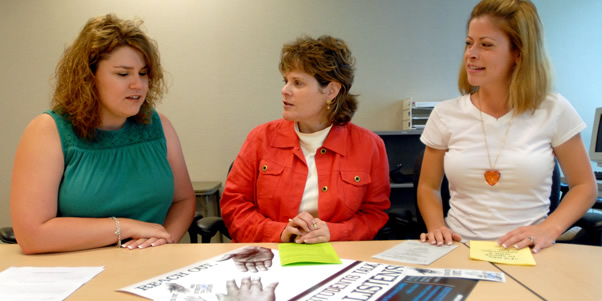Suicide Prevention Program Increases Awareness
Anti-Stigma Campaign Launches in August
July 22, 2008
By Debra Cano Ramos
A break-up. Failing grades. Coping with sexual orientation and self-identity issues. Social and academic pressures. Dealing with university life.
For some college students, these may be reasons why suicide seems like the only answer. With suicide a leading cause of death among college students nationwide, Cal State Fullerton has embarked on a comprehensive program to prevent suicide and create awareness about mental health resources and services for students.
"Transitioning to college can be an overwhelming experience, explained Mary Hermann, director of health education and promotion at the Student Health and Counseling Center. "Often, fear and lack of awareness about services prevent college students from getting the help they need. Suicide is a preventable public health problem.
Among the factors contributing to student anxiety are the pressures of working and attending college, and for foreign students, difficulties with acclimating to college life in this country, Hermann said. Cal State Fullerton students work at least 10 hours a week and nearly 1,200 international students, representing 79 nations, study at the university, she noted.
In October 2006, Cal State Fullerton was awarded a three-year federal grant from the Department of Health and Human Services, Substance Abuse and Mental Health Services Administration (SAMHSA). So far, the university has received $150,000 in support of its Campus Suicide Prevention Program.
Survey of Students
According to a survey of Cal State Fullerton students conducted by the American College Health Association this year, 65 percent of the 786 respondents had feelings of hopelessness, one of the key causes of depression and a leading risk factor of why young people have thoughts about suicide, said Jackie Blyleven, health educator at the Student Health and Counseling Center.
In the same survey, 15.6 percent, up from 14 percent last year, of respondents indicated that they suffered from depression. More than 46 percent also said they felt "so depressed it was difficult to function.
The prevalence of serious psychological distress is highest among 18- to 25-year-old adults — and the least likely group to receive treatment or counseling because of the perceived stigma, SAMHSA reports on its website.
According to fall 2006 National College Health Assessment Report data, more than half of all college students in the United States reported feeling "things were hopeless and more than a third said they have felt "so depressed it was difficult to function.
Additionally, one in 10 students said that they have seriously considered attempting suicide during the past year. Suicide is the second leading cause of death for college students, according to the Centers for Disease Control and Prevention.
Campus Response
Cal State Fullerton's Student Health and Counseling Center has focused on establishing a crisis response team of mental health professionals and administrators, and developing protocol for responding to suicide and suicide attempts on campus. Hermann explained that these professionals now are better equipped to respond, including assessing the crisis to provide services for students and family members.
More than 100 student leaders, as well as faculty and staff members, have been trained on how to identify suicidal behaviors and assist individuals in need of professional help, Hermann said. A protocol manual — a step-by-step booklet on what to do if someone is suicidal — also will be available to faculty and staff members this fall.
In an effort to follow students who are receiving counseling and referral services, Hermann said that an electronic tracking system is being developed. "Now we’ll have a way to ensure that students at risk are getting the help that they need.
Increasing Awareness of Available Help
Another objective of the program is to reduce the stigma often associated with seeking and receiving mental health treatment, especially among college-age students, Blyleven said.
"We want to educate students that mental health is a major component of their general health and wellness, and decrease the negative attitudes that prevent young adults from seeking help, she said. The goal, she stress is to "prevent senseless tragedies and save lives.
Breaking down that stigma is a major part of a social marketing campaign created for Cal State Fullerton students. In August, a "Reach Out campaign will be launched campuswide to increase overall awareness among students about campus and community mental health and counseling resources available to them, Blyleven said.
A special campaign emphasis is to target multicultural and ethnic student populations about resource options. "These student groups are considered to be at high risk of suicide and other mental health conditions, and also are less likely to seek treatment, Blyleven said.
"The goal of this campaign is early intervention — to educate students and to let them know that our counselors are here for them, Blyleven said.
For more information about resources, visit www.fullerton.edu/universityblues. For suicide prevention training and/or more information about Student Health and Counseling, call 657-278-4334 or visit www.fullerton.edu/shcc.


